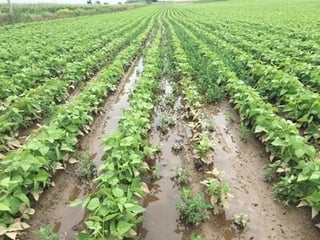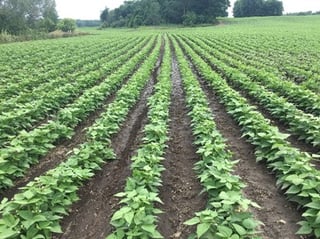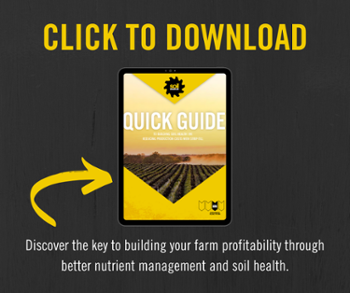Moldboard Misery
This is the story of how a moldboard plow dramatically changed the soil properties of a field, which was previously managed with years of minimal tillage and cover crops along with one year of strip-till with the SoilWarrior®.
Tyler Vollmershausen is the sixth generation on his family’s farm in Oxford County in southwestern Ontario, Canada. He farms with his father Larry, uncle Brian and grandfather Doug. The Vollmershausens raise corn, edible beans and cereals. Rye, oats and barley are used as cover crops on their farm; they believe in biological tillage. "We use a wide variety of cover crops, but cereal species like rye, oats and barley are our 'go-to' choice because they’re easy to use and can still be effective late in the season after corn/bean harvest,” says Tyler. The use of cover crops allows them to keep living plant roots in the soil at all times. This is why strip-tillage with the SoilWarrior is such a great fit for their farm. “I like strip-tillage because you conserve two-thirds of the soil’s surface, allowing regeneration to occur,” says Tyler.
In spring of 2016, the Vollmershausens were informed that approximately half of one of their fields would be moldboard plowed as part of a union gas project. Later that spring, the Vollmershausens were notified of a change of plans. The project site was abandoned, leaving them with a plowed field. As fate has it, that was the best part of the farm. It had always out-yielded the other part by 30-40%. This portion of field hadn’t seen intensive tillage since fall of 2012. Trying to stay optimistic, Tyler and his family thought, "How bad could it be? The plow only ran once."
In one growing season the Vollmershausens noticed the following effects on this particular edible bean field.
- Plowed beans had faster growth early on.
- Significant weed pressure (lambsquarters) increase with plowed beans. They hadn’t experienced weed pressure of this magnitude since doing intensive tillage.
- Increased white mold in plowed beans.
- Visual differences in plant architecture: plowed beans flopped over and had more vegetative growth. Strip-till beans remained much more upright with less vegetative growth.
- Harvest was difficult on plowed beans; they had to harvest all in one direction (downhill).
- Strip-till beans had over $100/ac net profit increase over plowed (higher yield and less inputs).
What worried Tyler even more than plant structure was what the moldboard plowing did to the soil structure. The issue became visually apparent after 2 inches of rain. “Soil structure was destroyed with the plow. Water infiltration was greatly reduced,” says Tyler.
 Moldboard Plowed Edible Bean Field
Moldboard Plowed Edible Bean Field
“This photo was taken the day after a 2-inch rain event on the plowed ground. I couldn’t get closer or I would have been ankle deep in mud.”
 Strip-Tilled Edible Bean Field
Strip-Tilled Edible Bean Field
“The photo above shows the bean field we have 2 farms over with the same soil type and slope after the same 2-inch rain event. This field hasn’t seen intensive tillage in a long time, and had a cereal rye cover crop before beans," remarks Tyler.
“This moldboard plow and strip-till comparison has given us confidence that we are headed in the right direction with soil health!"
Are you ready to escape the misery? Download our eBook to learn more about SoilWarrior zone tillage.

Comment